Sharp Jaw Pain Near Ear: Understanding TMJ Disorders and Related Conditions
What causes sharp jaw pain near the ear. How to identify symptoms of TMJ disorders. When should you seek medical attention for jaw pain. What are the treatment options for temporomandibular joint issues. How to differentiate between TMJ and other similar conditions.
Understanding Temporomandibular Joint (TMJ) Disorders
Temporomandibular joint (TMJ) disorders are a common cause of sharp jaw pain near the ear. The TMJ connects the skull to the jaw, allowing for essential movements like chewing and speaking. When this joint becomes misaligned or damaged, it can lead to a range of uncomfortable symptoms.
Common signs of TMJ disorders include:
- Pain or tenderness in the jaw area
- Difficulty opening or closing the mouth
- Clicking or popping sounds when moving the jaw
- Earaches or pain around the ear
- Facial pain or headaches
Is TMJ pain always bilateral? Not necessarily. Many people experience TMJ pain on only one side of their face, which can be confusing and alarming. This unilateral pain may be due to asymmetrical jaw movements, muscle imbalances, or trauma affecting one side more than the other.

Causes of One-Sided Jaw Pain
While TMJ disorders are a frequent culprit, there are several other potential causes of jaw pain on one side:
Dental Issues
Oral health problems can manifest as localized jaw pain. These may include:
- Cavities or tooth decay
- Abscessed teeth
- Gum disease
- Impacted wisdom teeth
- Misaligned or missing teeth
Bruxism
Teeth grinding or clenching, known as bruxism, can cause significant jaw pain. This habit often occurs during sleep and may affect one side more than the other.
Sinusitis
Inflammation of the sinus cavities can lead to pain that radiates to the jaw area. This is often accompanied by nasal congestion, facial pressure, and other sinus-related symptoms.
Differentiating TMJ from Other Conditions
How can you tell if your jaw pain is due to a TMJ disorder or another condition? While a professional diagnosis is crucial, there are some key differences to note:
Temporal Tendonitis
Often called “The Migraine Mimic,” temporal tendonitis shares many symptoms with TMJ disorders but typically involves more widespread pain, including:
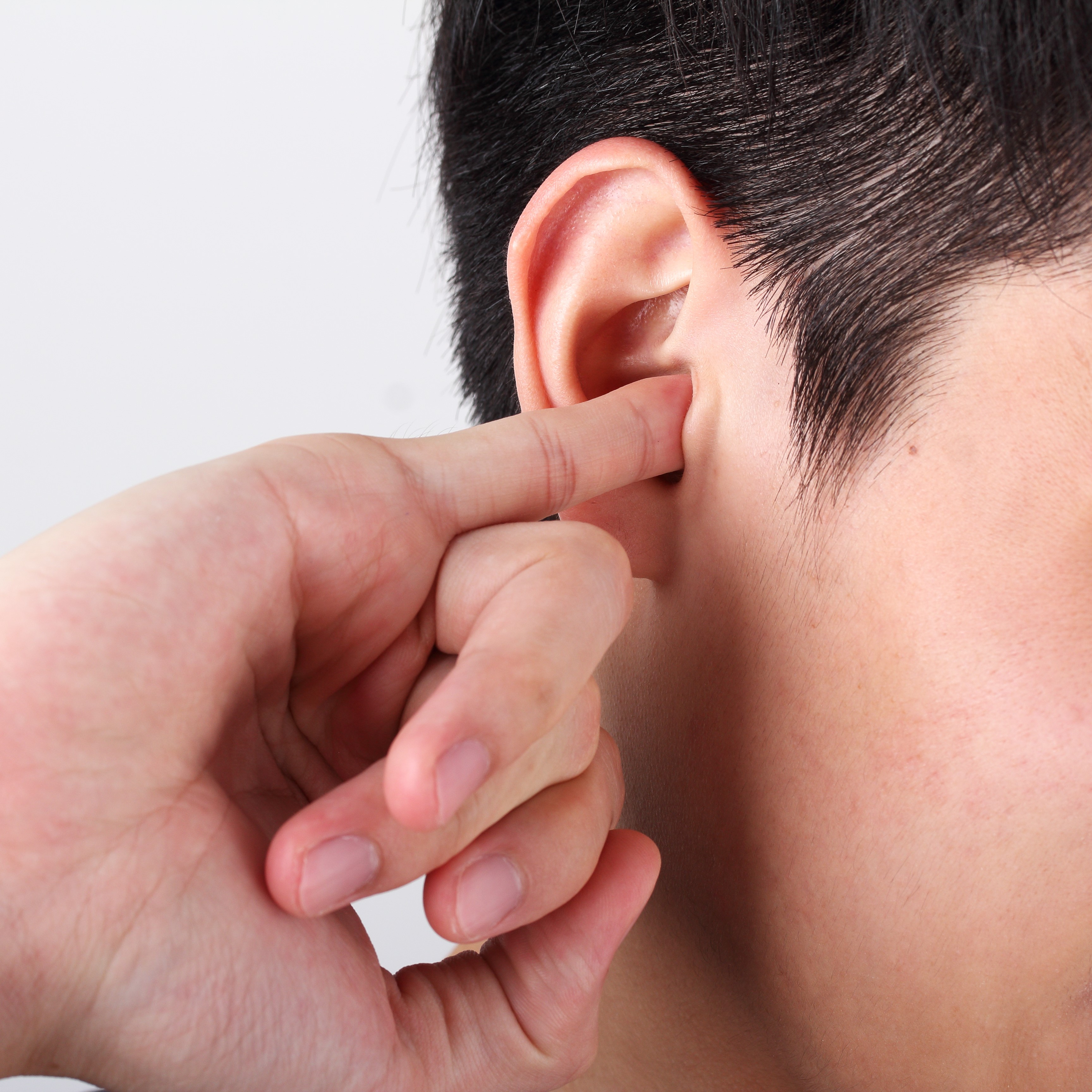
- Temporal headaches
- Eye pain
- Neck and shoulder discomfort
- Tooth sensitivity
Ernest Syndrome
This condition involves the stylomandibular ligament and can cause pain in up to seven specific regions of the face, head, and neck. Unlike TMJ disorders, Ernest Syndrome pain often extends to the throat and tongue areas.
When to Seek Medical Attention for Jaw Pain
While occasional jaw discomfort isn’t usually cause for alarm, certain symptoms warrant immediate medical attention. Contact your dentist or healthcare provider if you experience:
- Persistent pain lasting more than a few days
- Difficulty eating, drinking, or breathing
- Swelling or fever that doesn’t subside
- Sudden relief of pain accompanied by a burst of foul-tasting liquid
Can jaw pain be a sign of a more serious condition? In rare cases, yes. Severe or persistent jaw pain could indicate conditions like trigeminal neuralgia, giant cell arteritis, or even heart problems. This is why professional evaluation is crucial for ongoing or severe symptoms.

Home Remedies for Jaw Pain Relief
For mild jaw pain, several at-home treatments can provide relief:
- Apply hot or cold compresses to the affected area
- Take over-the-counter pain relievers like ibuprofen or acetaminophen
- Practice jaw exercises and gentle massage
- Maintain a soft food diet to reduce jaw strain
- Use relaxation techniques to alleviate tension
How long should you try home remedies before seeking professional help? If your symptoms don’t improve within a week or worsen despite home care, it’s time to consult a healthcare provider.
Professional Treatment Options for TMJ Disorders
When home remedies aren’t enough, various professional treatments can help manage TMJ disorders and related conditions:
Conservative Treatments
- Custom-fitted mouthguards or splints
- Physical therapy and jaw exercises
- Prescription medications (muscle relaxants, anti-inflammatories)
- Botox injections to relax jaw muscles
Advanced Interventions
In severe cases, more intensive treatments may be necessary:
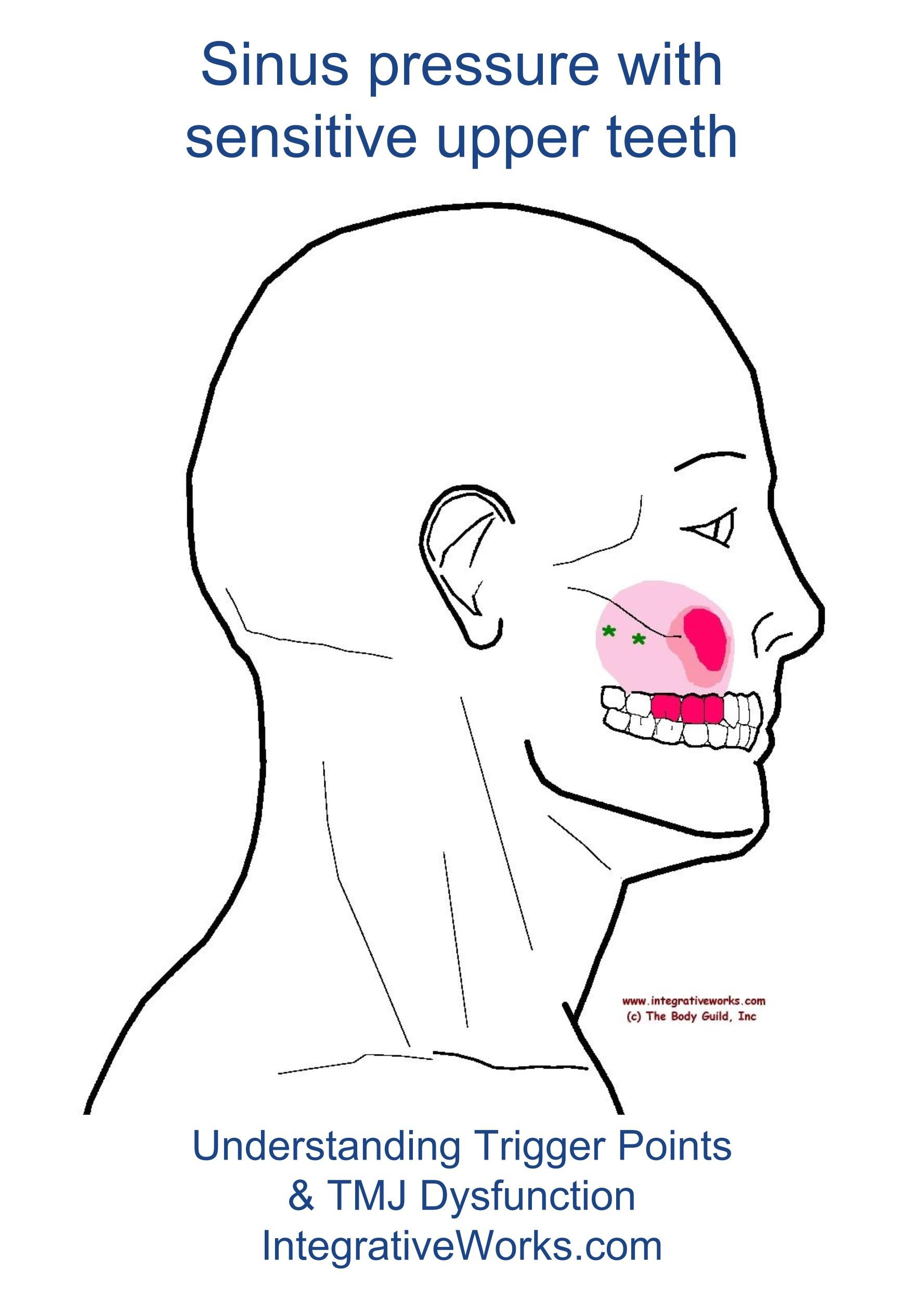
- Arthrocentesis (joint fluid removal)
- Corticosteroid injections
- Arthroscopic surgery
- Open joint surgery (in rare cases)
Are TMJ treatments always successful? While many patients find significant relief with conservative treatments, some cases may require ongoing management or more advanced interventions.
Preventing TMJ Disorders and Jaw Pain
Taking proactive steps can help reduce the risk of developing TMJ disorders or experiencing jaw pain:
- Practice good posture to reduce strain on the jaw and neck
- Avoid excessive gum chewing or nail biting
- Use proper technique when yawning or opening your mouth wide
- Manage stress through relaxation techniques or counseling
- Wear a mouthguard during sports or if you grind your teeth at night
Can dietary changes help prevent TMJ pain? Yes, in some cases. Avoiding hard or chewy foods and maintaining a balanced diet can reduce stress on the jaw joints and muscles.
The Impact of TMJ Disorders on Quality of Life
TMJ disorders and chronic jaw pain can significantly affect a person’s daily life and overall well-being. Common challenges include:
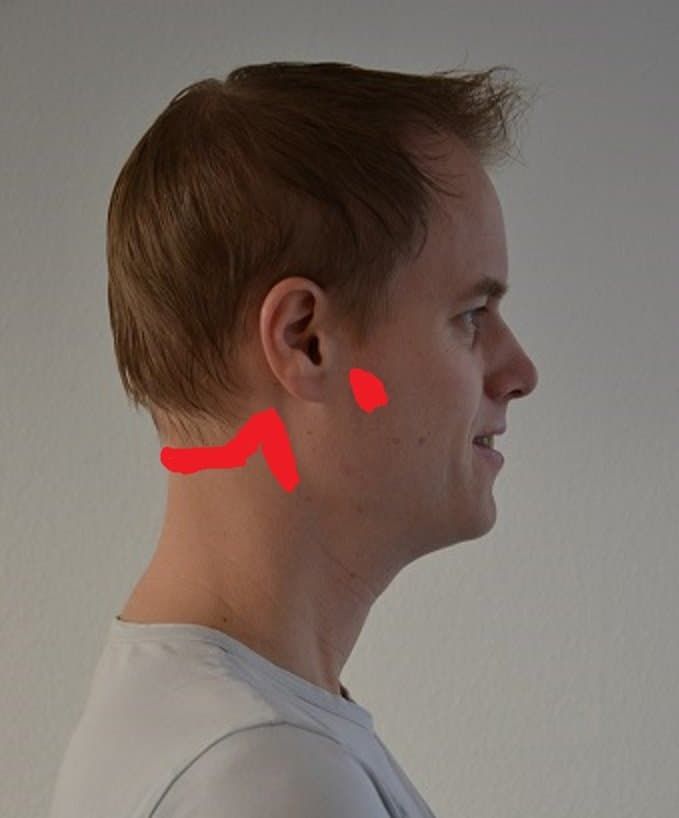
- Difficulty eating or speaking
- Sleep disturbances due to pain or discomfort
- Reduced social interactions due to pain or self-consciousness
- Increased stress and anxiety
- Potential impact on work or school performance
How can patients cope with the emotional impact of TMJ disorders? Support groups, cognitive-behavioral therapy, and mindfulness practices can be valuable tools for managing the psychological aspects of chronic pain.
Advancements in TMJ Disorder Research and Treatment
The field of TMJ disorder treatment is continually evolving, with researchers exploring new approaches to diagnosis and management:
Improved Imaging Techniques
Advanced imaging methods, such as high-resolution MRI and cone-beam CT scans, are enhancing our understanding of TMJ anatomy and pathology.
Regenerative Medicine
Stem cell therapy and platelet-rich plasma (PRP) injections show promise in promoting healing and reducing inflammation in TMJ disorders.
Personalized Treatment Approaches
Researchers are working on developing more targeted, individualized treatment plans based on genetic factors and specific pain mechanisms.

Will there be a cure for TMJ disorders in the future? While a single “cure” is unlikely due to the complex nature of these conditions, ongoing research is leading to more effective and personalized treatment options.
Understanding the nuances of jaw pain, particularly when it occurs on one side near the ear, is crucial for proper diagnosis and treatment. While TMJ disorders are a common cause, it’s essential to consider other potential conditions and seek professional evaluation for persistent or severe symptoms. With a combination of home care, professional treatments, and ongoing research, many individuals can find relief from jaw pain and improve their quality of life.
Why Does My Jaw Hurt on Only One Side?
While sleeping, you’re jolted awake by a sudden pain on only one side of your jaw. Although the situation can be alarming and confusing, don’t worry – it typically isn’t a cause of immediate concern. However, that doesn’t stop the questions from running through your head. What does it mean? When should you see a dentist? How can you alleviate the discomfort? Luckily, we’ve got all the answers you’re searching for and more – just keep reading!
What Causes Jaw Pain?
There are several reasons why you may experience jaw pain on one side, including:
TMJ Disorders
A temporomandibular joint (TMJ) disorder affects the joint that connects your skull and jaw. A disc separates the bones in this joint and helps it move properly. If it becomes misaligned or the joint is damaged, you might experience pain and other symptoms like tenderness, earaches, clicking or popping when opening your mouth, difficulty opening and closing your mouth.
Oral Health Problems
In some cases, jaw pain on one side can indicate underlying oral health problems. Some common issues that cause jaw pain are cavities, an abscessed tooth, gum disease, tooth decay, growth of wisdom teeth, missing or crooked teeth, and clenching or grinding your teeth.
Sinusitis
Inflammation in your nasal cavities can cause sinusitis. Since the nasal cavities are located behind the cheeks, inflammation can cause pain in one or both sides of your jaw. Usually, this pain is accompanied by other symptoms like nasal congestion, yellow or green mucus, facial swelling, fatigue, and difficulty smelling or tasting.
When to See a Dentist
As mentioned earlier, jaw pain on one side isn’t usually considered a dire situation. But if the discomfort is accompanied by other symptoms, it could indicate a more severe condition – one that will require immediate treatment.
If you experience any of the following, contact your emergency dentist right away:
- A persistent or recurring pain that doesn’t go away within a few days
- Difficulty eating, drinking, swallowing, or breathing
- Swelling or a fever that doesn’t go away
- Significant pain that vanishes after a burst of salty liquid that tastes and smells unpleasant
How to Alleviate Jaw Pain
Do you have mild pain in your jaw? You may not need medical treatment! Here are a few ways you can get relief:
- Apply a hot or cold compress.
 Heat can help your muscles relax, giving you relief from aches and stiffness. Alternatively, a cold compress can numb the pain and reduce swelling.
Heat can help your muscles relax, giving you relief from aches and stiffness. Alternatively, a cold compress can numb the pain and reduce swelling. - Take over-the-counter pain relief. Medications like acetaminophen (Tylenol) and ibuprofen (Advil) can temporarily relieve your pain.
- Rest your jaw as much as possible. Stick to a diet of soft foods that don’t require a lot of chewing. It’ll help you avoid overworking your jaw muscles!
- Massage your jaw. It can help release pain and tension in your jaw. Try some techniques on your own or visit a specialist for help (i.e., healthcare provider, physical therapist, massage therapist).
If you’re experiencing jaw pain on one side, use the tips outlined above for some relief. Although it should typically resolve on its own within a few days, you can always seek treatment from your dentist for peace of mind!
About the Author
Dr. Nicholas Brong is passionate about helping patient achieve and maintain optimal oral health. He earned his Doctor of Dental Surgery from the University of California in San Francisco. If you’re experiencing one-sided jaw pain, Dr. Brong and his team can help you get the prompt relief you deserve. To make an appointment, visit our website or call (507) 288-1066.
Nicholas Brong is passionate about helping patient achieve and maintain optimal oral health. He earned his Doctor of Dental Surgery from the University of California in San Francisco. If you’re experiencing one-sided jaw pain, Dr. Brong and his team can help you get the prompt relief you deserve. To make an appointment, visit our website or call (507) 288-1066.
Symptoms of Temporal Tendonitis | Symptoms of Occipital Neuralgia
Listed below are common pain disorders, along with a brief description of each, that are often misdiagnosed as TMJ problems.
TEMPORAL TENDONITIS
Temporal tendonitis has been called “The Migraine Mimic” because so many symptoms are similar to migraine headache pain. Symptoms include: TMJ pain, ear pain and pressure, temporal headaches, cheek pain, tooth sensitivity, neck and shoulder pain. Treatment consists of injecting local anesthetics and other medications, a soft diet, using moist heat, muscle relaxants and anti-inflammatory medications, and physiotherapy. Only rarely (in approximately 4% of cases) is surgery needed.
Treatment consists of injecting local anesthetics and other medications, a soft diet, using moist heat, muscle relaxants and anti-inflammatory medications, and physiotherapy. Only rarely (in approximately 4% of cases) is surgery needed.
Symptoms of Temporal Tendonitis
- TMJ Pain
- Tooth Sensitivity
- Cheek Pain
- Eye Pain
- Temporal Headache
- Neck & Shoulder Pain
- Ear Pain
- Ear Pressure
ERNEST SYNDROME
This TMJ-like problem involves the stylomandibular ligament, at tiny structure that connects the base of the skull with the mandible, or lower jaw. If injured, this structure can produce pain in as many as seven specific regions of the face, head and neck: the temple, the TMJ, the ear, the cheek, the eye; the throat, especially when swallowing, and the lower back teeth and jaw bone. Treatment of Ernest syndrome, which is successful about 80% of the time, consists of injections of local anesthetic and medication (cortisone or Sarapin), physiotherapy, and at times, the use of an intraoral splint.
Treatment of Ernest syndrome, which is successful about 80% of the time, consists of injections of local anesthetic and medication (cortisone or Sarapin), physiotherapy, and at times, the use of an intraoral splint.
OCCIPITAL NEURALGIA
Occipital neuralgia is generally ignored in the medical textbooks. This disorder is characterized by pain located in the cervical and posterior regions of the head (these are the occipital areas) which may or may not extend or radiate into the sides of the head and ultimately, into the facial and frontal regions. There are actually two major types of occipital neuralgia: lesser occipital and greater occipital, with the lesser type being more common.
Symptoms of Occipital Neuralgia
- Occipital Pain that may or may not be limited to one side
- Pain radiation from back of the head in to the sides and finally, in to the temples, cheek and forehead
- Pain above and behind the eye
- Severe light sensitivity
- Nausea when pain is severe
- Pain radiation in to the ear, shoulder, and at times, the arm
TRIGEMINAL NEURALGIA
Trigeminal neuralgia is a terrible disorder of the trigeminal, or fifth cranial nerve. This is one of the most painful problems that plagues human beings. In fact, its description first appeared in the scientific literature in 1672. Another common name for trigeminal neuralgia is tic douloureux which literally means unbearably painful twitch. Far too often, when a person is suffering with severe facial pain with no apparent cause, the diagnosis given is trigeminal neuralgia. Because of this, the patient may be subjected to medications and even very serious surgical procedures which may not be necessary. The symptoms tic douloureux are very characteristic: sharp electrical pain which lasts for seconds. This pain is triggered by touching a specific area of the skin by washing, shaving, applying makeup, brushing the teeth, kissing, or even cold air. The second division of the trigeminal nerve (the maxillary division), which supplies feeling to the mid-face, upper teeth and palate, seems to involved most. The pain is so severe that the sufferer will do virtually anything to avoid touching the trigger zone, producing the pain.
This is one of the most painful problems that plagues human beings. In fact, its description first appeared in the scientific literature in 1672. Another common name for trigeminal neuralgia is tic douloureux which literally means unbearably painful twitch. Far too often, when a person is suffering with severe facial pain with no apparent cause, the diagnosis given is trigeminal neuralgia. Because of this, the patient may be subjected to medications and even very serious surgical procedures which may not be necessary. The symptoms tic douloureux are very characteristic: sharp electrical pain which lasts for seconds. This pain is triggered by touching a specific area of the skin by washing, shaving, applying makeup, brushing the teeth, kissing, or even cold air. The second division of the trigeminal nerve (the maxillary division), which supplies feeling to the mid-face, upper teeth and palate, seems to involved most. The pain is so severe that the sufferer will do virtually anything to avoid touching the trigger zone, producing the pain.
ATYPICAL TRIGEMINAL NEURALGIA
In contrast to the typical type, atypical trigeminal neuralgia seems to cause pain constantly with the intensity increasing and decreasing. There are trigger zones with this type; however, there also is an area of dull aching which is intensified by touching the trigger zones. All three divisions of the trigeminal nerve seems to be affected equally. A common cause of this disorder is trauma, especially after a surgical incision or blow to the face.
Comparison of symptoms of Typical & Atypical Trigeminal Neuralgia and Atypical Facial Pain
- Symptoms
- Character of Pain
- Duration
- Frequency
- Location
- Triggers
- Stress Inducted
- Typical TGN
- Sharp, Electrical
- Seconds
- Intermittent
- V2* & V3+*
- Extra-Oral
- No
- Atypical TGN
- Dull
- Constant
- Constant
- All 3 Divisions
- Varies
- No
- Atypical Facial Pain
- Varies
- Constant
- Constant
- Vague
- Varies
- Possibly
*V2: Maxillary division of the trigeminal nerve
*V3+: Mandibular division of the trigeminal nerve
ATYPICAL FACIAL PAIN
Atypical facial pain is a disorder that also affects the trigeminal nerve. However, the symptoms are not as clearly defined as they are in typical and atypical trigeminal neuralgia. Atypical facial pain seems to affect people who are under a tremendous amount of stress and may even have a history of psychiatric problems. This does not mean that one suffering with atypical facial pain is mentally ill. We who treat this problem need to do much more research to understand this terrible disorder.
However, the symptoms are not as clearly defined as they are in typical and atypical trigeminal neuralgia. Atypical facial pain seems to affect people who are under a tremendous amount of stress and may even have a history of psychiatric problems. This does not mean that one suffering with atypical facial pain is mentally ill. We who treat this problem need to do much more research to understand this terrible disorder.
As recent as 1979, a newly described pain disorder was reported. This disorder, which came to be known as osteocavitational lesions, produced pain similar to trigeminal neuralgia, both the typical and atypical types. In fact, usually these patients are diagnosed with trigeminal neuralgia. The diagnosis is complicated by the fact that the x-ray examination of the bone is usually normal.
These bony lesions oftentimes develop in jaws and produce little or no pain whatsoever. They may lie dormant for years and sometimes never become painful or cause a problem. Those that produce pain are termed NICO (Neuralgia Inducing Cavitational Osteonecrosis) lesions.
NICO lesions produce referred pain patterns which also serve to confuse both patient and doctor. However, just like trigeminal neuralgia, there are trigger areas that, when pressed, produce pain. These trigger areas develop directly over the areas of affected bone. The mandible, or lower jaw, is affected more often than the maxilla, or upper jaw. One important aspect of NICO is a history of tooth extraction usually years earlier. Any tooth area may be involved. However, lower back teeth seem to be most common. Small areas of bone actually die, producing neuralgia-like pain symptoms. It appears that after a tooth extraction, a NICO lesion may develop due to injury of the blood vessels in the area which ultimately results in poor circulation, resulting in bone death in some cases. Pathologically, this is termed osteomyelitis. This slow bone death has been known for years and occurs in every bone in the body. Other common bones affected are the hips and knees.
Why does the jaw near the ear on the left hurt so much that it even hurts to chew?
Contents
- Diseases of the gums, maxillofacial apparatus
- Injuries of the jaw
- ENT diseases
- Sore jaw near the ear: inflammation
- Pain caused by op
- Neurological pathologies
- Vascular diseases
- Jaw pain near ear: what to do?
If the jaw joint near the ear hurts, treatment requires prior identification of the source of pain. Not always the problem is caused by diseases of the jaw. Without an examination by a specialist, it is definitely impossible to answer why the jaw near the ear hurts. The cause of the pathology can be various damage to soft and bone tissues from correcting malocclusion with braces to a malignant tumor.
Not always the problem is caused by diseases of the jaw. Without an examination by a specialist, it is definitely impossible to answer why the jaw near the ear hurts. The cause of the pathology can be various damage to soft and bone tissues from correcting malocclusion with braces to a malignant tumor.
Common causes of jaw pain include:
- The need to wear braces or dentures. Correction of the bite, normal placement of teeth for some time is accompanied by pain.
- Wisdom tooth growth. Deviation from the accepted norm (for example, the wrong angle relative to the jaw) causes damage to the soft tissues and the jaw itself. When chewing, the pain is aggravated.
- Surgical intervention (removal of a cyst, the tooth itself) can cause pain for some time, but if it does not go away after the wound has completely healed, there is reason to assume the development of a new disease.
If the pain in the jaw is not related to the correction of the bite or surgery, it is recommended to visit the dentist as soon as possible.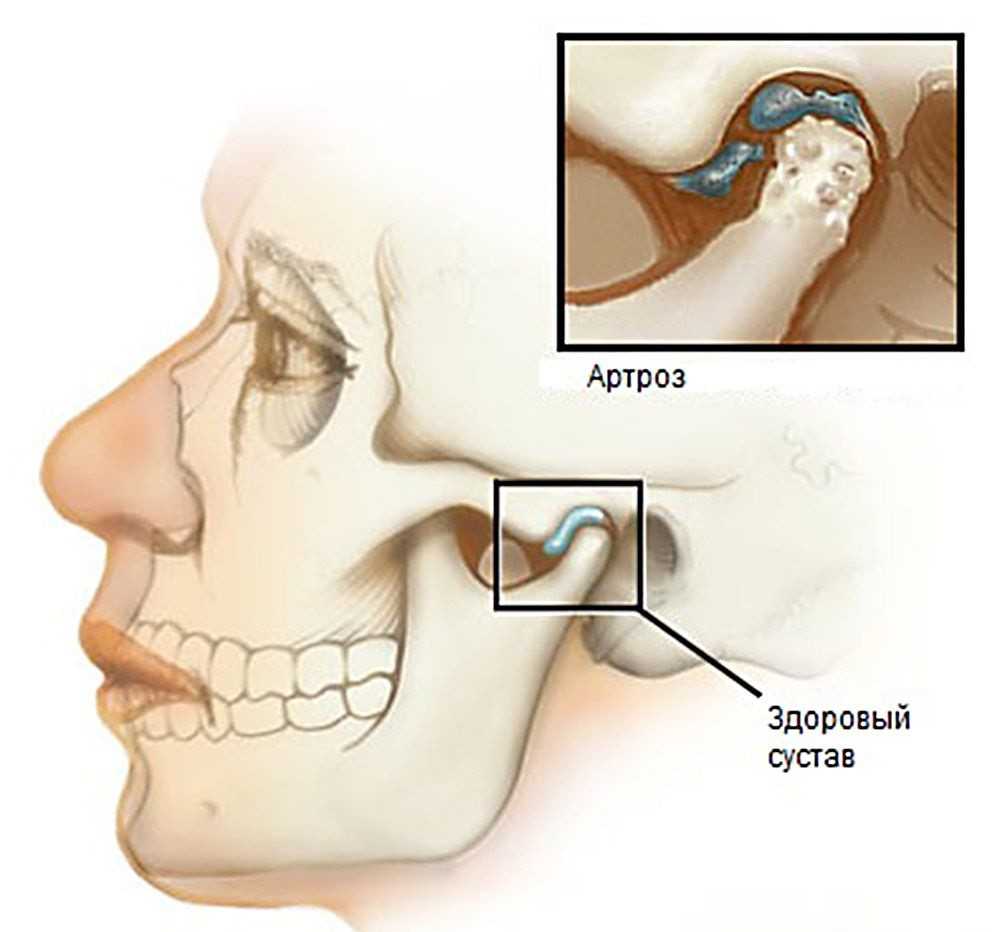
Diseases of the gums, maxillo-dental apparatus
- Osteoarthritis of the temporomandibular joint leads to stiffness, pain at the time of mouth opening. While chewing, the pain in the jaw is aggravated by noise in the left ear.
- Arthritis. Inflammation of the jaw joint is accompanied by severe pain, crunching when chewing.
- Joint dysfunction. The pain manifests itself when trying to chew, tightly connect the upper and lower jaw. Sensations are given to the ear zone, the cheek area. It is worth opening your mouth wide, as clicks are clearly audible.
- Gingivitis. The inflamed mucous membranes of the gums react sharply to attempts to chew rough food.
- Osteomyelitis. Pathogens are considered to be pathogenic microorganisms that have penetrated the bone tissue. As a result of their activity, a purulent process begins in the bone, due to which uncomfortable sensations arise in the form of pain in the ear on the left side.
 Because of this, in the process of chewing, the pain in the jaw increases markedly.
Because of this, in the process of chewing, the pain in the jaw increases markedly.
Injuries of the jaw
If the jaw hurts near the ear on the left, which hurts to chew, it may be the result of injuries. The severity of the damage determines the rate of disappearance of the symptom that prevents you from chewing calmly on one of the sides. The most minor injury is considered a bruise. Acute pain and swelling leave the owner after a few days.
See also: Pulsation in the ear without pain causes and treatment
A fracture is considered a rather dangerous injury to the jaw. In addition to severe pain, hemorrhage under the skin and swelling, the patient is faced with the fact that he is experiencing serious difficulties in opening his mouth. As a result of a fracture of the upper jaw, hemorrhage in the orbital region can be observed, which leads the specialist to assume a fracture of the base of the jaw. When, immediately after a fracture, the victim not only has an earache, but a clear liquid, blood, is released from it, he is taken to the hospital as soon as possible to provide qualified assistance.
ENT diseases
The jaw on the left near the ear can hurt so much that it hurts to chew as a result of running purulent processes or inflammation in the sinuses themselves. Among the ENT diseases that can cause pain when chewing on the left side, inflammation of the tonsils and tissues close to them are also noted.
Mumps or mumps is a viral inflammation of the parotid gland, making it painful, which is felt in the region of the upper and lower jaw, ear. Additionally, the patient’s temperature rises, there is weakness, swelling on one side. The disease often occurs in childhood. Those who have been ill develop a stable immunity that does not leave the pathology a chance for a second attack.
Pain in the jaw near the ear: inflammation
Caries of the jaw, which is caused by the movement of infection along with blood from the affected tooth to the jaw. This phenomenon is usually the result of trauma. In addition to painful sensations in the jaw, which tend to increase at the moment of chewing, a person also observes other changes in his body:
- high temperature, which can reach 40 degrees;
- swelling under the skin;
- asymmetry, distortion of the face due to severe puffiness;
- examination of the oral cavity makes it easy to identify the “culprit”, which necessarily has pulpitis or a significant carious defect;
- inflammation of the submandibular lymph nodes.

Abscess and phlegmon. Purulent lesions on soft tissues provoke high fever, acute pain. Separately, a paratonsillar abscess is isolated, which is considered a complication of angina. It has a special location next to the amygdala.
See also: Blocked ear, but does not hurt: what are the reasons and what to do?
Pain caused by tumors
Most benign tumors do not have characteristic symptoms. If the jaw near the ear hurts as a result of a benign tumor, then the patient is suspected of one of three variants of the disease:
- Adamantinoma. The tumor affects the chewing process due to the thickening of the jaw. If at an early stage the soreness of the jaw is mild, then the progression of the pathology provides acute and severe pain.
- Osteoid osteoma. The growth of such a tumor is very slow. Acute pains at the first stage disturb only during sleep. When the size of the tumor becomes such that it provokes asymmetry of the face, pain also occurs when chewing.

- Osteoblastoclastoma. The pain is aching in nature, a fistula appears on the skin, and a tumor with a light pink tint is observed on the gums.
Malignant tumors are extremely difficult to distinguish from benign tumors without proper testing. There are several types of malignant tumors. Cancer itself is a lesion of soft tissues close to the jaw. Pathology grows deep into the tissues at high speed, causing loosening of the teeth and their subsequent loss. Pain gain intensity gradually.
With the development of a malignant tumor in the connective tissue, a rapid growth of pathology is observed. The disease brings a person intense shooting pain. The patient may be misled by the fact that at the first stage of the disease he observes not pain, but a decrease in the sensitivity of the mucous membrane and skin.
Osteogenic sarcoma grows in bone tissues. The pain is characterized by duration and strength, gradually it begins to spread to the ear area and face.
Prolonged severe pain in the jaw begins to gradually capture new territories, spreading to the ear area, as well as the face.
Neurological pathologies
In pathologies of the nerves, pain can occur, which is felt in the temporomandibular joint and in the ear region. Specialists identify:
- Neuralgia of the superior laryngeal nerve. The gradual increase in pain is especially pronounced when yawning and eating. Additional signs include hiccups, active salivation, and coughing.
- Trigeminal neuralgia. Pain near the ear is accompanied by a burning sensation. It becomes especially intense at night.
Vascular diseases
If blood flow is disturbed, arteritis of the facial artery develops. The disease is characterized by severe burning pain. The defeat of the facial artery causes a strong painful feeling in the lower jaw. Discomfort is given for frequent in the eye area. If the carotid artery is affected, then the pain increases when you try to touch the face and neck area.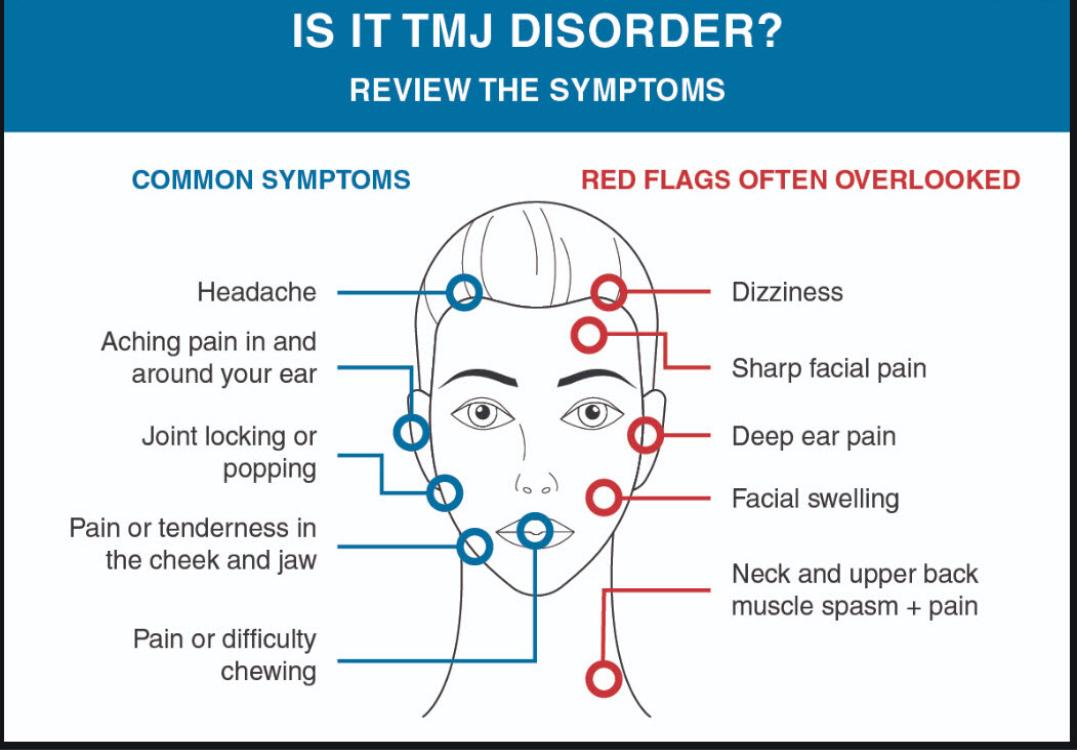
See also: Why does a lump behind the ear appear and hurt (when pressed and without it)?
Pathologies with impaired blood flow, such as angina pectoris or heart attack, are usually not associated with jaw pain. However, experts register non-standard development of the disease. There are cases when there is no habitual acute pain behind the sternum, and the attack is accompanied by a sharp intense pain in the lower jaw on the left side.
Such a course of the disease is extremely dangerous and very rarely makes the patient seek the advice of a cardiologist. A sharp toothache leads a person to a dentist, who, not knowing about the concomitant diseases of the cardiovascular system of his client, can begin to treat his teeth.
Jaw hurts near ear: what to do?
The occurrence of acute pain in one of the jaws near the ear requires the patient to seek medical attention as soon as possible. Many diseases can become a threat to human life if timely treatment is not taken.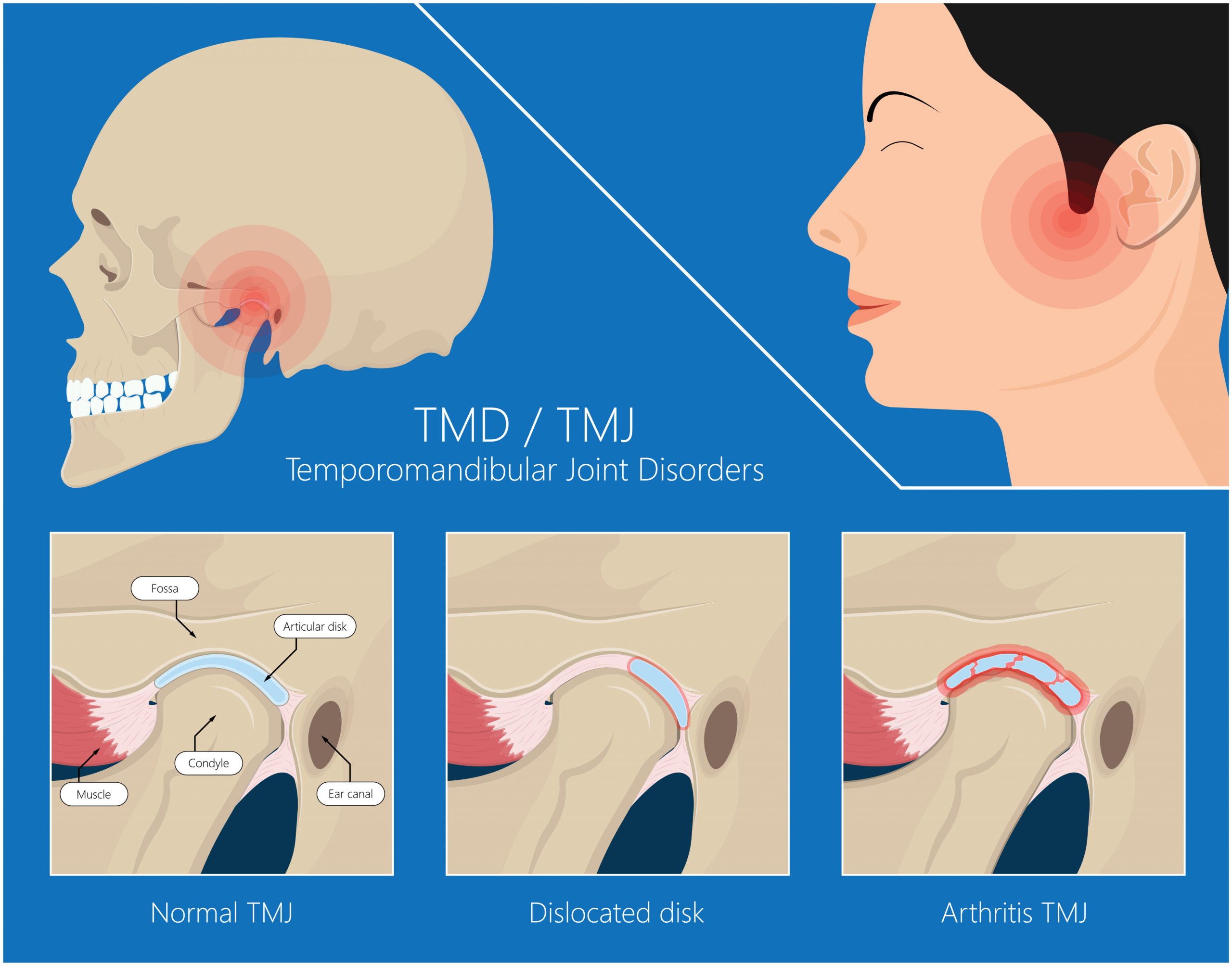
Any injuries of the face that hit the jaw require an early visit to the emergency room to exclude complications, to determine the absence of splinters.
Inflammatory processes are treated only under the supervision of a specialist. With the ineffectiveness of drug therapy, in advanced cases, one has to resort to surgical intervention.
In some cases, the patient has to endure acute pain due to the inability to immediately contact the dentist for help. The situation allows the use of mild painkillers. But here it is necessary to exercise maximum caution. The use of aspirin or paracetamol can cause severe bleeding if surgery is performed in the jaw area in the morning. The action of the drug can distort the clinical picture of the disease when examined by a dentist, which will complicate the correct diagnosis, the result will be a long and ineffective treatment.
Some phytotherapy recipes help relieve discomfort for a while, but do not have a serious effect on the body. Even decoctions must be prepared in accordance with the recommendations of an experienced herbalist or consult with your therapist.
Even decoctions must be prepared in accordance with the recommendations of an experienced herbalist or consult with your therapist.
Sore cheekbone and jaw near the ear on the right or left: it hurts to chew, radiates to the ear
The jaw can hurt near the ear on the right or left, usually it is painful for patients to chew and speak, sometimes the pathology is accompanied by an increase in body temperature. Pain can occur only when pressed or at rest, be burning or aching. There are many combinations of pain syndrome, and each indicates a specific lesion. Therefore, doctors first conduct a detailed survey of the patient, and after that they prescribe additional clinical and laboratory studies – MRI, X-rays, and a general blood test.
Contents
- Which doctor to contact if the jaw near the ear hurts
- Why the jaw near the ear can hurt depending on the location of the pain
- Description of diseases that cause pain in the jaw and ear when chewing
- Dental diseases
9 0005 Pain with SARS
- Pain due to facial injuries
- Tumors
- TMJ dysfunction
Which doctor to contact if the jaw hurts near the ear
If you experience discomfort and pain in the area of the ear, cheekbones and jaw, you need to determine which doctor should be consulted. The disease that caused pain in the jaw area can be treated by an otolaryngologist, surgeon or dentist:
The disease that caused pain in the jaw area can be treated by an otolaryngologist, surgeon or dentist:
- Pain caused by a disease of the soft tissues of the face is treated by a surgeon.
- If the pain syndrome has arisen due to inflammation of the lymph nodes, ears, sinuses, larynx or tonsils, infectious diseases, you need to contact an otolaryngologist.
- If the pain in the jaw near the ear, which manifests itself when chewing, is caused by an inflammatory process in the gums or teeth, a dentist will help get rid of the pathology.
- Oral and maxillofacial surgeons and dental surgeons specialize in the treatment of diseases of the temporomandibular joint, dentition, phlegmon and abscesses.
- Pain symptoms in the facial area can cause diseases of the peripheral nervous system. To identify inflammation or pathology of nerve fibers, you should contact a neurologist.
It is difficult to independently determine what caused the pain syndrome.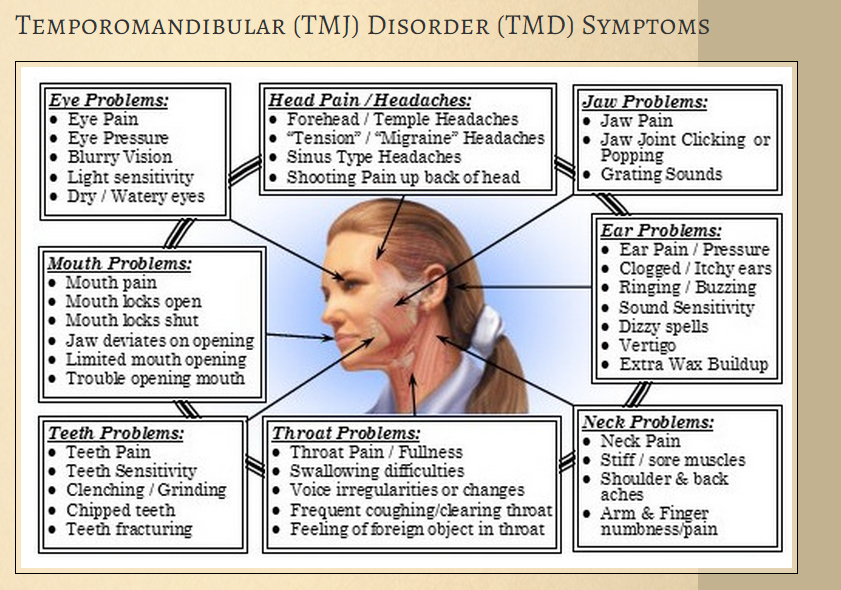 You should make an appointment with a therapist who will study the clinical picture and redirect the patient to the right doctor.
You should make an appointment with a therapist who will study the clinical picture and redirect the patient to the right doctor.
If the jaw hurts sharply and very strongly, you should immediately call an ambulance. Such symptoms may indicate a dislocation or even a fracture.
Why the jaw near the ear can hurt depending on the location of the pain
Pain localized in the region of the upper jaw may be provoked by sinusitis. The disease develops against the background of injuries of the skull and nose, prolonged hypothermia, pulpitis and periodontitis. You can determine sinusitis by the following signs: nasal congestion (usually one nostril), separation of thick mucus or pus when blowing your nose, nasal voice, fever.
The zone of maximum pain sensitivity is usually located near the nose, but in advanced cases, the pain can spread to the entire face. Sometimes the disease affects the paranasal sinuses on both sides, but most often it is unilateral. If the patient’s jaw hurts only near the ear on the left, and it does not hurt him to chew on the right side, then the inflammation develops in the sinuses located on the left.
Sometimes the disease affects the paranasal sinuses on both sides, but most often it is unilateral. If the patient’s jaw hurts only near the ear on the left, and it does not hurt him to chew on the right side, then the inflammation develops in the sinuses located on the left.
Both in the upper and in the lower jaw, pain occurs for the following reasons:
- Osteomyelitis – inflammation of the jaw. It develops as a result of unprofessional treatment of sinusitis, tooth extraction, implant placement or sinus lift. The disease is accompanied by fever, the pain may slightly radiate to the left or right lower jaw.
- Gingivitis is an inflammatory process in the soft tissues of the gums. This disease is characterized by aching pain and bleeding gums. Additional symptoms are mild fever and bad breath.
- Alveolitis – inflammation of the tooth socket after tooth extraction. The zone of pain innervation is small, the temperature is elevated.

- Submandibular abscess, phlegmon .
Pain in the jaw that occurs when chewing and is accompanied by discomfort near the ear may indicate the following problems:
- Carotidinia. The syndrome may develop as a result of dissection of the temporal artery and soft tissue tumors that irritate the nerve endings located near the carotid artery. Pain sensations are paroxysmal, the most intense pain is expressed in the upper jaw, radiates to the ear, neck and oral cavity. When you press on the side of the neck and the area under the Adam’s apple, a sharp sharp pain occurs.
- Ear node neuralgia . It can develop as a result of a sore throat, sinusitis and hypothermia. The disease can be recognized by a burning, paroxysmal pain that originates in the temple area, passes through the ear and spreads down to the lower jaw and chin area. The jaw hurts the most when pressed under the ear, there is practically no pain inside the oral cavity.
 The characteristic symptoms of the disease are clicks in the ear and increased salivation.
The characteristic symptoms of the disease are clicks in the ear and increased salivation. - Erythrootalgia syndrome. May result from cervical spondylosis, functional disorders of the temporomandibular joint, and thalamus involvement. With the syndrome, the ear hurts badly on the left side or on the right, the jaw ache is weaker. Often the pain syndrome affects the back of the head and the frontal zone.
Description of diseases causing pain in the jaw and ear when chewing
Pain in the jaw near the ear can be due to dental, surgical and neurological reasons. Treatment is prescribed taking into account the provoking factor, the localization and nature of the pain, the accompanying symptoms.
Dental diseases
Aching pain in the cheekbones and jaw may appear after dental procedures. Often the cause of pain is the poor-quality removal of a wisdom tooth, the treatment of caries, or the neglected carious processes and prosthetics themselves. Jaw pain of this origin is usually accompanied by swelling and inflammation at the site of surgery. If it does not go away within a few days after the intervention, you should contact a more qualified dentist to eliminate the medical error.
Jaw pain of this origin is usually accompanied by swelling and inflammation at the site of surgery. If it does not go away within a few days after the intervention, you should contact a more qualified dentist to eliminate the medical error.
An exception that does not require treatment is aching jaw pain on the left and right, caused by wearing braces to correct the bite. Such pain is caused by constant pressure on the jaw bones, it is normal and is eliminated with the help of painkillers.
Pain caused by dental diseases and pathologies is usually throbbing in nature and worsens towards the night. Against the background of dental pathologies, the cheek can be very swollen. To eliminate unpleasant symptoms, it is necessary to get rid of the source of painful sensations.
SARS pain
The main complication of respiratory disease is the spread of infection throughout the body. The inflammatory process, as a complication of SARS, can begin in any part of the body – lungs, intestines, knees, side, oral cavity. That’s why cheekbones and jaw can hurt with a runny nose and the common cold.
That’s why cheekbones and jaw can hurt with a runny nose and the common cold.
If the maximum soreness is observed between the maxillary and mandibular arch, the reason most often lies in the fact that the articular sac has become inflamed due to the influx of bacteria and viruses. With this pathology, the jaw hurts near the ear and not during chewing, but constantly.
With inflammation of the auricle, the cheekbone near the ear may hurt. Usually it is the ear that hurts more intensely, and the pain only radiates to the jaw. Such inflammation is often accompanied by general malaise and fever up to 37.5-38 ° C. Otolaryngologists specialize in the treatment of people with complications of respiratory diseases.
Pain due to facial injuries
- Soft tissue injury. Even a mild bruise of soft tissues without affecting the bones is accompanied by an acute pain attack, swelling and hematoma. To exclude the possibility of a fracture, which may not be palpable due to the fact that the cheek is swollen, an x-ray should be taken.
 The consequences of such an injury should be treated if the symptoms do not disappear within a few days.
The consequences of such an injury should be treated if the symptoms do not disappear within a few days. - Dislocation. Dislocation can occur not only due to a blow, but also due to a sharp opening of the mouth. With a strong dislocation, even a simple chewing and swallowing movement is given with great difficulty. After the surgeon visually establishes a dislocation, he will take a control picture to rule out a fracture, and then set it. Dislocations are characteristic only for the lower jaw, and therefore the pain manifests itself from below.
- Fracture. A fracture causes unbearable pain around the site of injury, spreading to the entire face. The victim needs immediate medical attention at a hospital.
Jaw dislocation
Tumors
The ear and jaw on one side can hurt when a bone tumor is formed – both benign and cancerous. Before the appearance of specific symptoms, there is numbness in the muscles, mild swelling, swelling and discomfort in the joints. In the presence of a tumor under the same ear, in the area of \u200b\u200bwhich the jaw aches, there is a high probability of developing atheroma – a benign neoplasm. Atheroma can be cured.
In the presence of a tumor under the same ear, in the area of \u200b\u200bwhich the jaw aches, there is a high probability of developing atheroma – a benign neoplasm. Atheroma can be cured.
TMJ dysfunction
For diseases of the temporomandibular joint, spontaneous pain syndrome is not characteristic, pain sensations appear only when pressure is applied or a load is applied to the joint. With dysfunction of the TMJ, it is painful for a person to chew food, speak, yawn. But the disease is diagnosed by more obvious signs – clicks and crunch of the joint when chewing and talking, tinnitus.
Articular pathologies are characterized by damage to one side of the face. If, when pressed, pain occurs in the left ear and left side of the jaw, then the disease develops there.
How to treat the disease and what can be done at home
Analgesics will help relieve acute pain, but taking them will not solve the problem, but will only delay the recurrence of the symptom.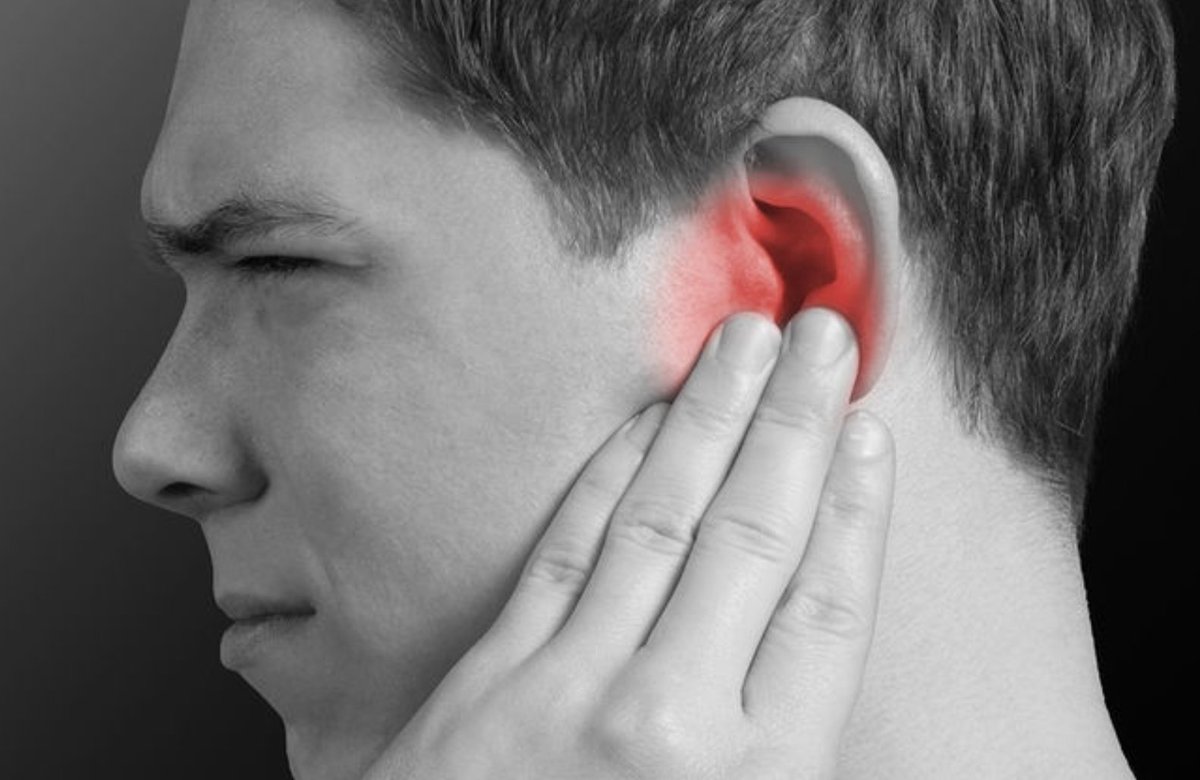 You can take such drugs: Analgin, Ketanov, Dimexide, Dolaren.
You can take such drugs: Analgin, Ketanov, Dimexide, Dolaren.
In addition to drug treatment, the use of folk remedies is indicated, for example, for dental diseases, you can rinse your mouth with a soda solution (1 tsp of soda per 1 glass of water), and for inflammation, apply warm (not hot) compresses with chamomile to the affected area . But before using any folk remedy, you need to consult a doctor, since pain in the jaw can indicate a very serious pathology, the improper treatment of which can lead not only to complications, but also to death.
Clinic treatment options:
- Dislocation. The specialist will set the jaw and apply a fixation bandage.
- Bruise. The doctor will order an X-ray to rule out a fracture and apply a bandage.
- Fracture. Splinting, intermaxillary fixation or osteosynthesis with titanium platinum is performed (in case of an open fracture).
- Osteomyelitis.
 The dentist removes the diseased tooth, opens the purulent foci and prescribes drug therapy.
The dentist removes the diseased tooth, opens the purulent foci and prescribes drug therapy. - TMJ dysfunction. Patients with pain in the jaw joint near the ear are not treated with surgery. Such a pathology can be effectively treated with electrical impulses. For this, a special device is used – a myostimulator. One therapeutic procedure lasts about 40 minutes. In addition, medications, massage and other activities are prescribed at the discretion of the doctor.
- Diseases of the ENT organs. Therapy is carried out with the use of antiviral, analgesic, antiseptic drugs.
- Inflammation of the articular sac, dental nerve, neuralgia. Rubbing, drug therapy, applying compresses to the problem area are shown. The dental nerve is usually removed and the canals are filled.
Only a doctor can determine the true cause of the pain syndrome and prescribe the appropriate treatment. Theoretical knowledge about the possible causes and signs of diseases that provoke uncomfortable pain can only help the patient correctly determine which doctor to go to.

 Heat can help your muscles relax, giving you relief from aches and stiffness. Alternatively, a cold compress can numb the pain and reduce swelling.
Heat can help your muscles relax, giving you relief from aches and stiffness. Alternatively, a cold compress can numb the pain and reduce swelling. Because of this, in the process of chewing, the pain in the jaw increases markedly.
Because of this, in the process of chewing, the pain in the jaw increases markedly.

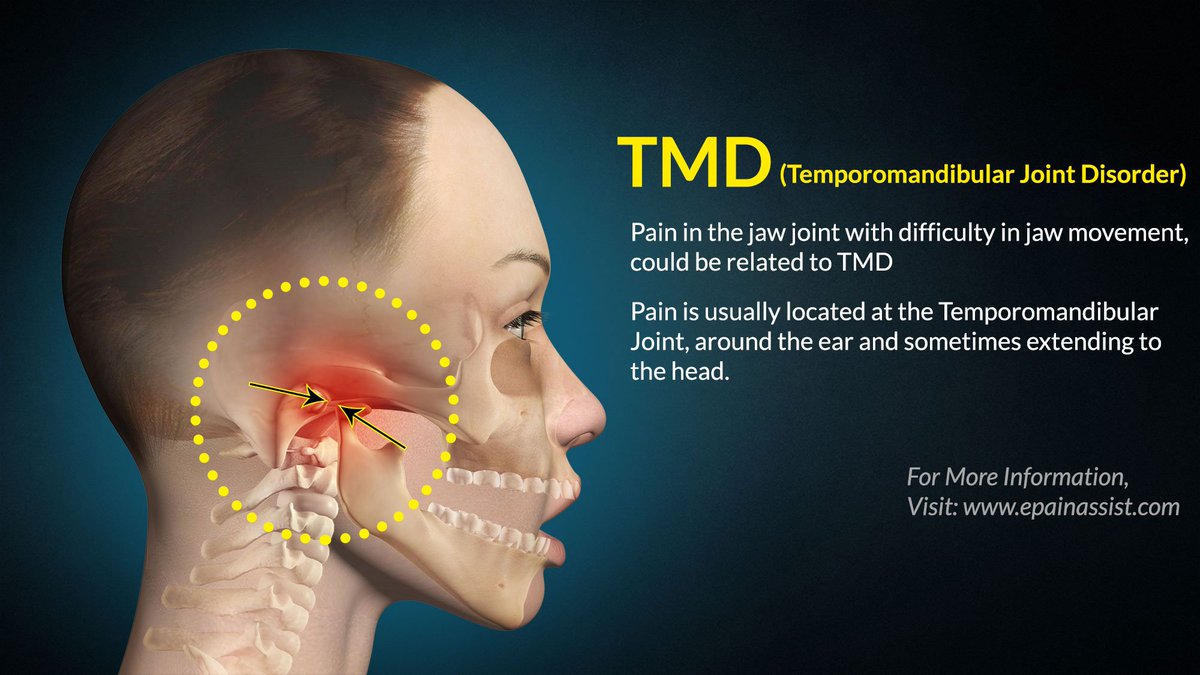
 The characteristic symptoms of the disease are clicks in the ear and increased salivation.
The characteristic symptoms of the disease are clicks in the ear and increased salivation. The consequences of such an injury should be treated if the symptoms do not disappear within a few days.
The consequences of such an injury should be treated if the symptoms do not disappear within a few days. The dentist removes the diseased tooth, opens the purulent foci and prescribes drug therapy.
The dentist removes the diseased tooth, opens the purulent foci and prescribes drug therapy.